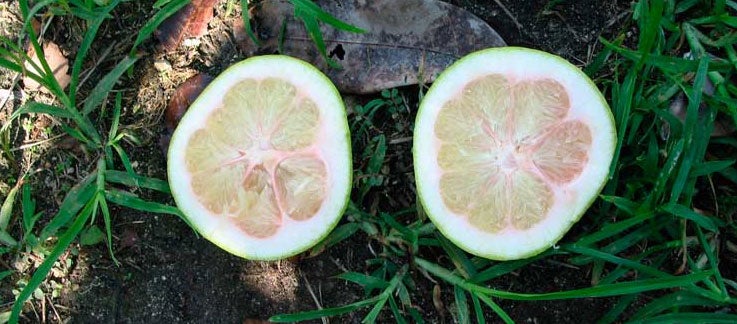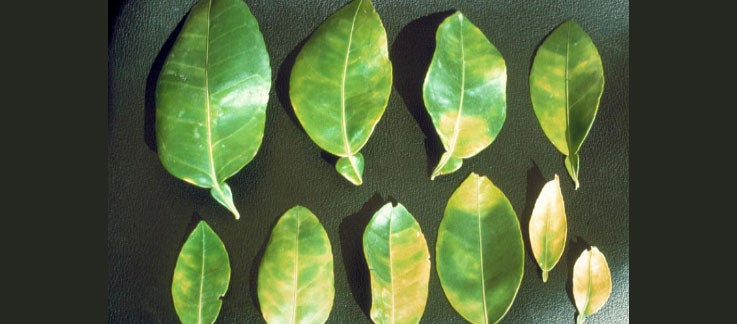Master Gardener: Citrus Greening raises concerns for fruit
Published 12:59 am Saturday, April 18, 2020
|
Getting your Trinity Audio player ready...
|
By Sheri Bethard
Texas Certified Master Gardener, Orange County Master Gardeners
This will be the first of two articles discussing Citrus Greening and Citrus Canker. First, I will go over Citrus Greening and next week I will cover Citrus Canker.
They are two diseases which attack the citrus family. Both are currently in Texas and other states along the Gulf Coast including South Carolina and the Los Angeles area. To control these diseases the counties in which these diseases have appeared are currently quarantined. Texas counties under quarantine closest to us are Harris, Montgomery, Galveston, Brazoria and Fort Bend. Additional counties along the coast and also the Rio Grande Valley area are included. Within the quarantine areas all home-grown citrus must be consumed within the area and home-grown citrus plants cannot be transported outside of the quarantined area.
Commercial citrus businesses, Internet shippers and roadside vendors within the State of Texas should be able to prove they are in compliance with the federal and state quarantine guidelines. Before you buy, make sure they are in compliance and they citrus was not from a quarantined area.
Citrus Greening is a devastating bacterial citrus disease caused by the bacterium Candidatus Liberibacter asiaticus, which is vectored by the Asian citrus psyllid (ACP). It is also known as the yellow dragon disease. It was confirmed in Louisiana in 2008 and Texas in 2012 and is found worldwide.
There is no cure for this disease once a tree is infected. While the disease poses no threat to humans or animals, it has devastated millions of acres of citrus production around the world, including in the United States.
What to look for? A tree infected by Citrus Greening may have:
Asian citrus psyllid—
- Adult is about the size of a toothpick tip (about 3mm or 1/8th inch) and has a distinctive 45-degree angled posture when present on leaves
- Nymphs are smaller and yellow-orange. They feed on new growth and secrete a waxy substance.
Once a tree is infected with the bacteria, the tree can remain without detectable symptoms for months or years. During this symptomless phase, the tree can serve as a source of bacteria to infect other trees.
Leaves and branches–
- Leaves are blotchy, mottled, and yellowed
- Leaves may have raised veins with a corky appearance
Fruit—
- Fruit tastes bitter but poses no health problems to humans
- Fruit may be stunted or lopsided, remain green or partially green, fall prematurely from the tree
Since there is not a cure for Citrus Greening, prevention is the best approach to managing both.
- Do not purchase plants, fruit, budwood, rootstock seedlings or budded trees from quarantined areas and transporting it out of that area.
- Purchase certified plants by buying plants, budwood, and seedlings only from Texas Department of Agriculture-certified citrus nurseries
- Use good sanitation practices to reduce potential disease spread. Practice general cleanliness and use alcohol-based sanitizers, bleach solution, and antibacterial soap solutions to decontaminate equipment and tools and reduce the risks associated with human and mechanical transmission of the diseases.
- Remove and destroy diseased plants to eliminate potential bacteria for future infections.
- Monitor nearby citrus plants. If new infections appear, take action swiftly. TDA regulations require disposal of infected tree and plant material by burning or bagging and burying it at least 2 feet deep at a municipal landfill.
Plant protection chemicals that contain copper can help prevent infection. These products reduce risks but do not stop the disease from occurring or cure affected trees.
- Application timing is critical to provide protection.
- New, growing tissues are the most susceptible to infection.
- Multiple applications may be needed to ensure proper coverage on the plant.
- Proper chemical use and rates are available on the product label. Always read all directions and labels before using any chemical control agent.
For more information on Citrus Greening check out https://plantclinic.tamu.edu/files/2019/10/CitrusGreeningRVSD.pdf Or you can contact Texas A&M AgriLife County Extension office – Orange County 409 882-7010 or the Texas Dept. of Agriculture at www.texasagriculture.gov or call (877) 542-2474.
Be sure to look for my article next week on Citrus Canker another devastating citrus disease.







